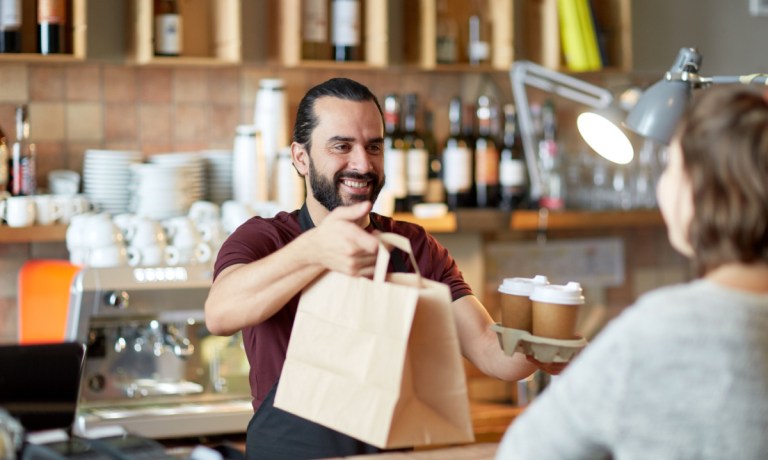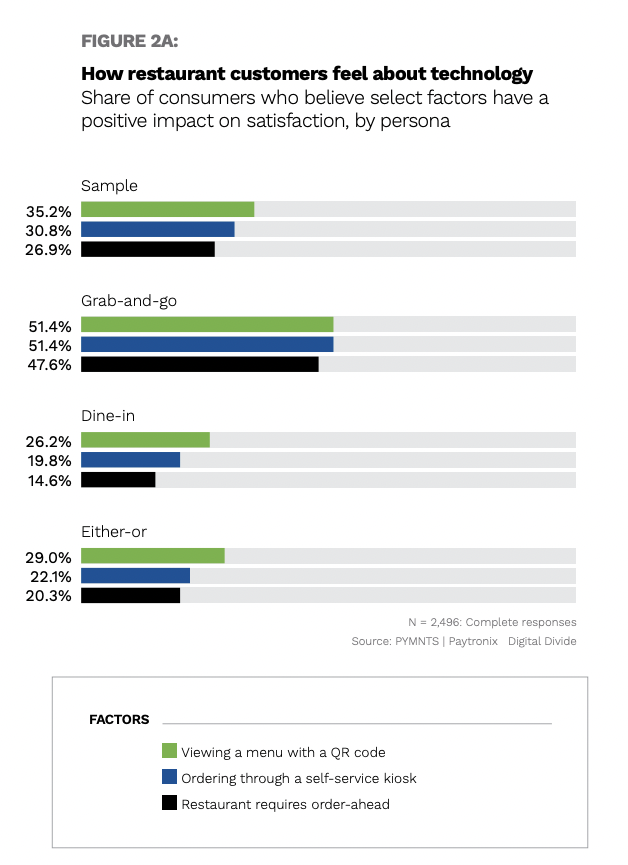
Even when consumers are ordering restaurant meals for pickup, PYMNTS Intelligence reveals, the majority would rather not be limited to exclusively making purchases via mobile device.
The PYMNTS Intelligence study “The Digital Divide: Technology, the Metaverse and the Future of Dining Out” done in collaboration with Paytronix, drew from a survey of nearly 2,500 U.S. consumers who regularly purchase food from restaurants to understand how different technologies affect their dining experiences.
The results reveal that only 27% say a restaurant requiring order-ahead has a positive impact on their satisfaction. Even grab-and-go customers who are just taking their food and leaving typically do not want to be limited to order-ahead, with only a minority (48%) reporting that they feel positively about such a requirement.

Some restaurants are turning to pickup-only locations in an effort to save on labor costs and boost margins. Starbucks, for example, has been expanding its footprint with these locations.
The expansion comes as Starbucks rethinks its store designs in light of the rise of digital ordering. The company announced its reinvention plan a year ago, for which the company is making a significant investment in “purpose-built store concepts,” tailoring store designs to different use cases and occasions.
Similarly, Chick-fil-A is slated to open a pickup-only store in New York City early next year, the company announced over the summer.
“Digital orders make up more than half of total sales in some markets — and growing — so we know our customers have an appetite for convenience,” said Khalilah Cooper, the brand’s executive director, restaurant design, said in a statement.
Across the industry, brands are rethinking their store concepts with an eye toward mobile efficiency. In a 2021 interview with PYMNTS, Mike Grams, then president and chief operating officer at Taco Bell, spoke to the brand’s intention to shrink restaurant footprints in response to the rise of off-premises dining.
“So much has changed in even the past two years, [and] it’s exciting to think of what can continue to evolve,” said Grams. “As we look ahead, we’re excited by the challenge to reduce our restaurant footprint in concepts of the future, to better cater to our customers’ evolving needs.”